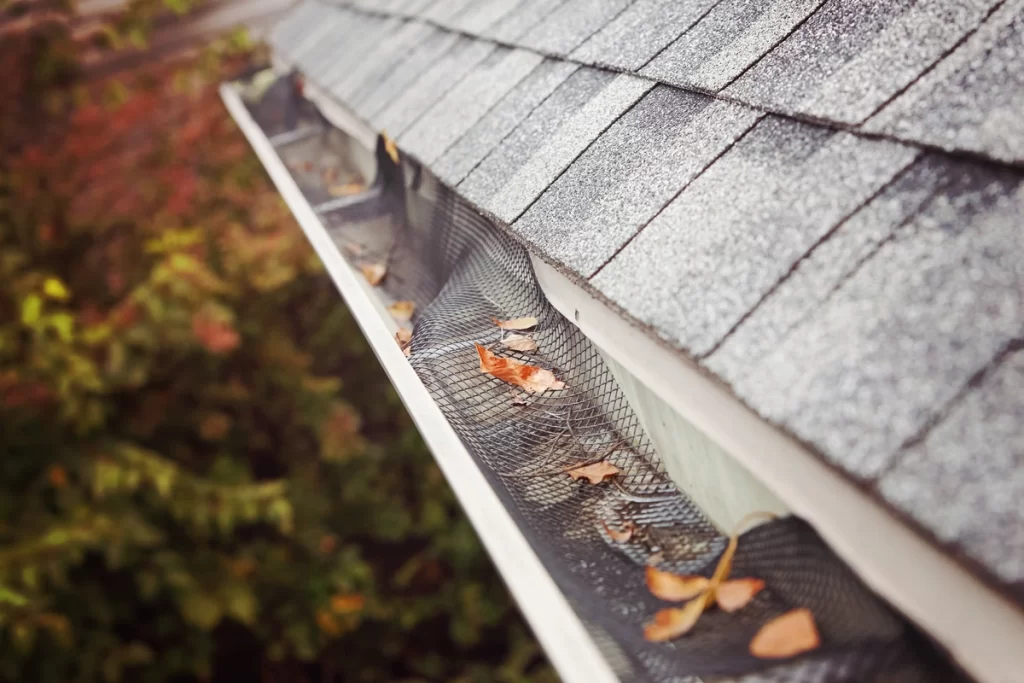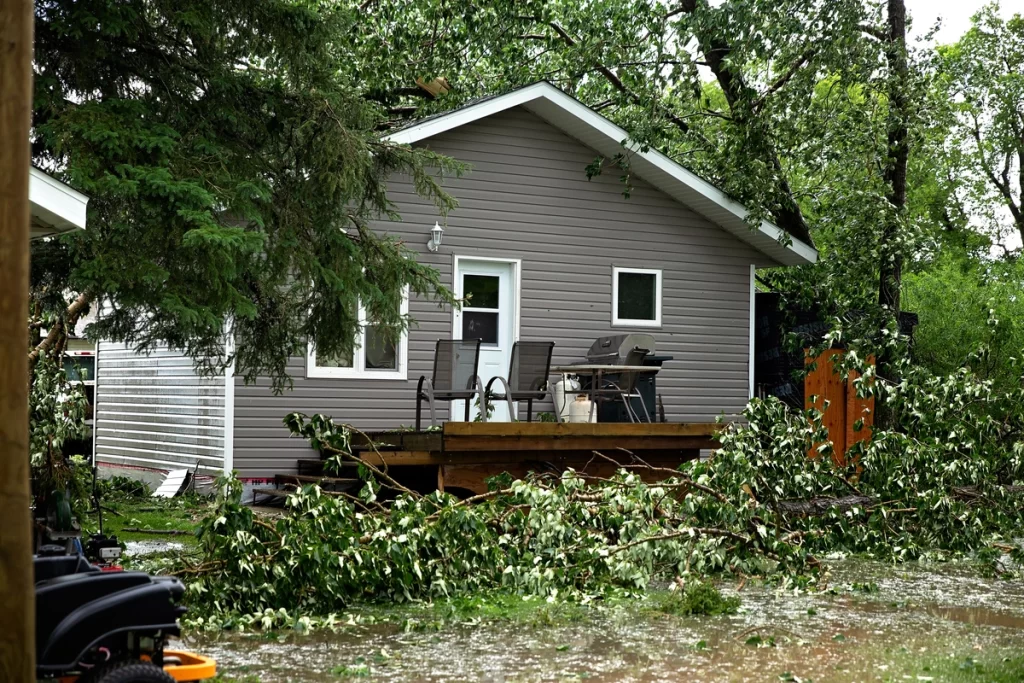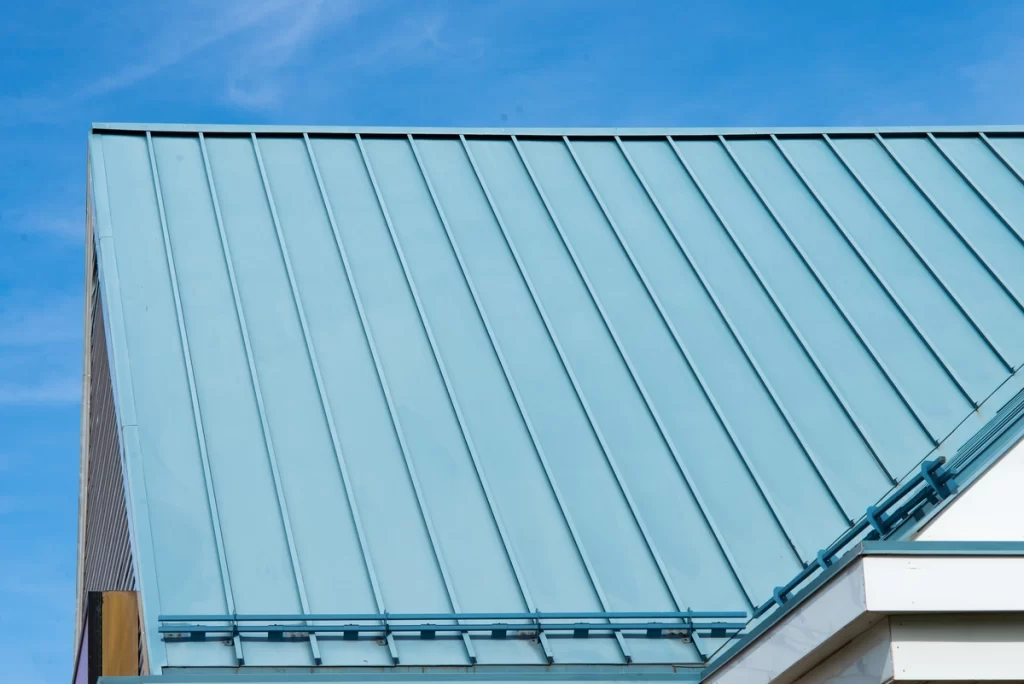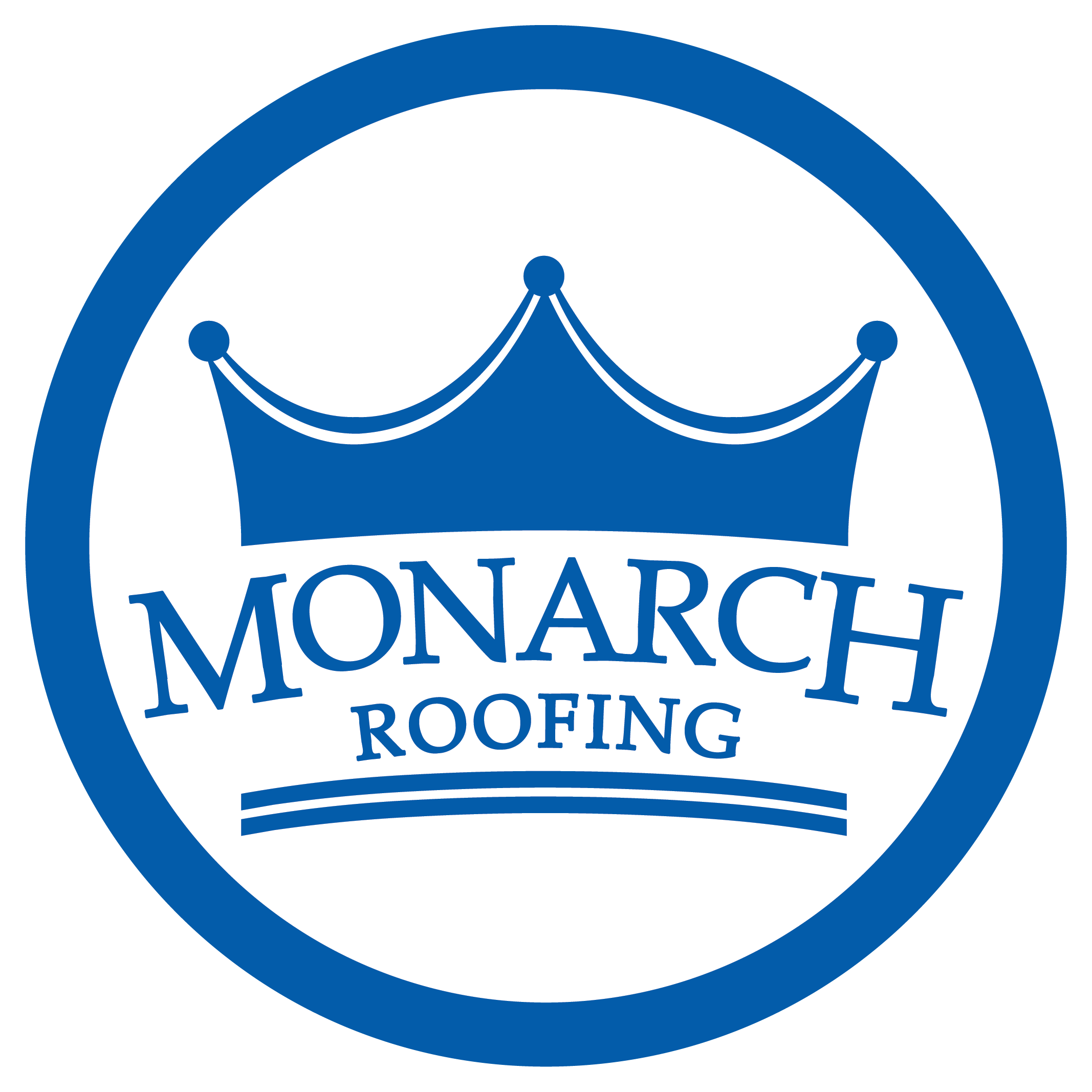Have you ever seen a car covered in hail dents driving down the road and you say to yourself, “Poor guy”? The same thing can happen to your roof but in a much less obvious way.
If your roof has suffered hail damage, you’ll want to get a storm damage inspection right away.
Hail damage roof erosion is often much harder to see with the naked eye, much unlike your neighbor’s sedan that got pummeled in the driveway one day. But that doesn’t mean it is any less vital to fix it.
Signs of hail damage on a roof might look like this:
- Discoloration that looks like polka dots
- Granules in the gutters or downspouts
- A water spot on your ceiling
- Cracked or dented shingles
If you notice any of these, it’s a good sign you need to call a professional roofer fast. This guide will teach you what to look for and the steps to take next to get your hail-damaged roof fixed as soon as possible.
How Does Hail Damage a Roof? ⛈
While hail can range in size from a tiny speck to golf ball, baseball, or even softball-sized— it’s the speed at which it hits your roof that really does the damage.
Hailstones fall from the sky at anywhere from 20 to 100 miles per hour, according to the National Severe Storms Laboratory. When it collides with your roof, it can cause:
- Dents in gutters and flashing
- Bruising on shingles
- Cracks or splits in shingles
- Sloughing off of protective granules
While not all thunderstorms or hail storms produce anything large enough to damage your roof, it’s very important to take a look at your roof after any hail, no matter the size, to ensure your shingles are safe. If you find you need extensive roof repairs or a full roof replacement, then it’s time to consider the next step of hiring a professional roofer with reasonable roof prices and quality craftsmanship.
But first things first.
What Does Hail Damage On a Roof Look Like?
After a big storm, you may assume that hail damage is going to look like it does on a car as we mentioned before. However, hail damage can take many forms. Many of which are subtle and hard to spot without being right up close. So here are a few signs to look for when it comes to roof hail damage.
Damaged Flashing, Vents, or Plumbing Boots
If you take a look at your roof and find that any of the flashing is bent, dented, or otherwise damaged, it’s likely hail has hit your roof. The same goes for any vents or plumbing boots. These are all made of metal and will show signs of wear after being hit by hailstones.
Granules in Your Gutters and Downspouts
If you notice that your gutters or downspouts have an unusually large amount of black granules, it’s possible that your shingles were hit by hail and lost some of their protective coating. These granules help protect your shingles from the sun’s UV rays, so if there are more in your gutters than usual, it means your shingles are susceptible to the elements and need to be repaired right away.
Discoloration or Spots on Shingles
Hail damage can also present itself as discoloration or spots on your shingles. If you notice that your shingles have developed small, dark spots, it’s likely they were hit by hail. These spots are usually about the size of a dime or quarter and will be evenly spaced out across your roof.
Cracked Shingles or Flashing
Hail can even hit your shingles hard enough to crack them right down the middle. If you find any cracked shingles or flashing, it’s important to call a professional roofer as soon as possible to get them repaired before the damage gets worse.
Water Stains on Your Ceiling
If your roof gets hail damage bad enough to leak, you might immediately notice a water spot on your ceiling from water dripping down through the attic floor. This is something that must be addressed immediately to avoid mold and mildew growth in your attic.
Other Signs of Hail Damage to Your Property
Even if you don’t see any of the signs of hail damage on your roof right away, if you notice hail damage to other parts of your property, it might be a good idea to get your roof inspected anyways. After a hail storm, you might notice:
Damaged Landscaping and Plants
If you have any plants or landscaping features in your yard, they can be a good indicator of hail damage to your roof. If you find any broken branches, leaves, or flowers after a storm, it’s possible that your roof was hit by hail as well.

Damaged Exterior Furnishings
Outdoor furniture, siding, and windows can also be damaged by hail. If you have any patio furniture that was blown over or any broken windows it might indicate the strength of the wind that the storm the night before brought and a roof inspection is recommended.
Dents in Your Siding, Gutters, or Downspouts
Just like on your roof, any dents in your siding, gutters, or downspouts can be an indication that there was hail in the storm and it might have damaged your roof as well. These are much softer materials and easier to dent; however, if hail hits your house, any area is at risk of damage.
Dents on Any Cars Parked Outside
The same goes for any dents on cars. Cars that get dented from hail have been hit pretty hard and if the same happens to your roof, you need to act fast to prevent any further damage like water leaks.
How to Get Your Roof Inspected 🔍
If you think that your roof has been damaged by hail, the best thing to do is call a professional roofing contractor to come and inspect it for you. They will be able to tell you for sure if your roof was damaged and how bad the damage is. So, if you suspect hail damage after seeing any of the above signs, there are a few vital steps you can take to get your roof professionally inspected.
- Walk around your property and note any damage you can see, if any.
- Find a local, reputable contractor and schedule an inspection ASAP.
- Speak to your insurance agent regarding filing an insurance claim.
- Get your roof inspected and schedule repairs or a replacement.
But what can you expect from a roof inspection? Well, a professional roofing inspection will be quite thorough and cover all of the bases, not just the storm damage. A professional roofer is going to check the following before coming up with an estimate:
Your Roof’s Structure
The first thing a roofer is going to do is take a look at the structure of your roof from the outside. They will be looking for any signs of sagging, which could indicate that your roof’s trusses or rafters are damaged and need to be repaired or replaced.
The Roofing Materials

The roofer will also take a look at the type of roofing materials you have to determine if they can be repaired or if you need a new roof. The integrity of the materials can often stand up to hail, wind, and other elements. However, once it’s damaged it’s vital to act fast, so your inspection will be very thorough to find even the most minute scratch that can lead to leaks in the future.
Your Gutters and Downspouts
Another important part of your roof that will be inspected is your gutters and downspouts. The contractor will check to see if they are properly secured to your roof and if they are draining correctly. If you have any damaged or loose gutters, they will need to be repaired or replaced as soon as possible.
Any Workmanship Issues
Finally, the roofer will also check for any workmanship issues that might have led to your roof being damaged in the first place. This could be anything from improper installation to missing or damaged flashing. If there are any workmanship issues, they need to be corrected before you can move forward with repairs or a replacement. And most likely workmanship repairs would be covered under warranty if you’re within the limits of your workmanship warranty.
Potentially Your Attic or Home’s Interior
Roofers may not need to check your home’s interior, but if damage looks extensive enough they might take a look in the attic or upper floors to be sure damage or water leaks haven’t spread in which they’ll want to remedy all of those as well after the shingles are fixed or tarped.
Should You File an Insurance Claim?
Once you know for certain that your roof was damaged, you can decide if you want to file an insurance claim or not. If the damage is extensive and will cost a lot of money to repair, it’s probably worth filing a claim. But if the damage is minor, you might want to pay for the repairs yourself.
Keep in mind that most homeowner’s insurance policies have a deductible, so you will have to pay that out of pocket no matter what. And if you have a high deductible, it might not make sense to file a claim because you will end up paying most of the repairs yourself anyway.
You should also be aware that filing too many claims can cause your premiums to go up or your policy to be canceled altogether. So be mindful of which repairs you submit a claim for vs. not.
Work With a Reputable Storm Damage Expert
Ultimately, the best way to detect and remedy hail damage on your roof is to work with a trustworthy and experienced team like Monarch Roofing. Our HAAG Certified experts can diagnose the extent of your hail damage and offer a quick solution to get your roof back in top condition. Reach out to Monarch today for your hail damage roof repair needs.





